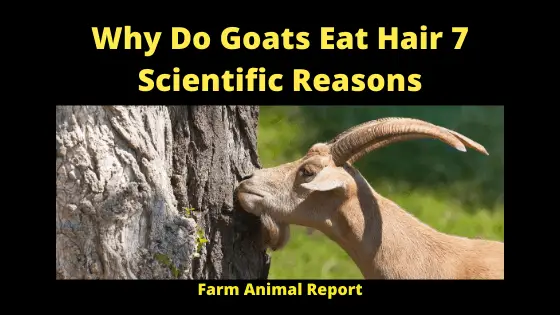Why Do Goats Eat Hair?
Why Do Goats Eat Hair – All goats are a little Bucky. They are very friendly animals and consider you as a fellow goat. It is true they nibble on everything and taste things; but, they also show affection by using their lower front teeth to comb themselves and each other’s hair (they have to use just their lower front teeth, they have not teeth on the top…. Just a hard palate).
The bucks will vigorously do this too does that are in heat and put their neck over the doe’s neck as if to say, this one is mine. Both does, and bucks will act bucky, they will roll up their front lip and show you their top gums if they like you.. like you a lot! If you want the goats to come to you if you get down on one knee, all the goats will come over, put their chin up to your chin, and smell your breath.
If they like you, it is if they say that I know you, I like you. You are part of the herd. If they do not like you, they will stomp and snort snot in your face. If they object to you, they will draw back their head and give you a very hard short butt; if they do this, you will grab their ear and not let go… they hate that.
Goats are like to browse as they eat, This results in that they will eat a little bit of this and then a bit of that. They are also very curious, so when they nibble people’s hair, other goats hair, they are probably just trying to determine if it’s edible. They also show affection this way.
There will be other different reasons that might be possible. There will be Ecto-parasitic infestation, and others will be a mineral deficiency.
See Amazons Resources on the Science of Raising Goats
Ecto-parasitic Infestation: Organisms living on the Outside of the Host
There will be ectoparasites on the goat’s body. That’s why your goat continues licking the hair and eating the hair.
Ectoparasites of goats do not generally cause heavy mortalities unless the infestation is extreme, but they will cause unthriftiness and loss of production if not controlled. Animals in poor health or low levels of nutrition are more likely to be affected, and young animals are more susceptible.
The Main External Parasites found in Affecting Goats are:
- Ticks
- Mites
- Fleas and lice
Ticks:
Ticks are more commonly found on goats. They can cause anemia resulting from blood loss, especially in kids and open sores, which become a site for screw-worm infestation.
Tick also transmit disease; the most common is heartwater. They also cause tick toxicosis (Sweeting sickness) and tick paralysis (also known as karoo paralysis). These both affect young animals and may be fatal. Tick paralysis may also affect man.
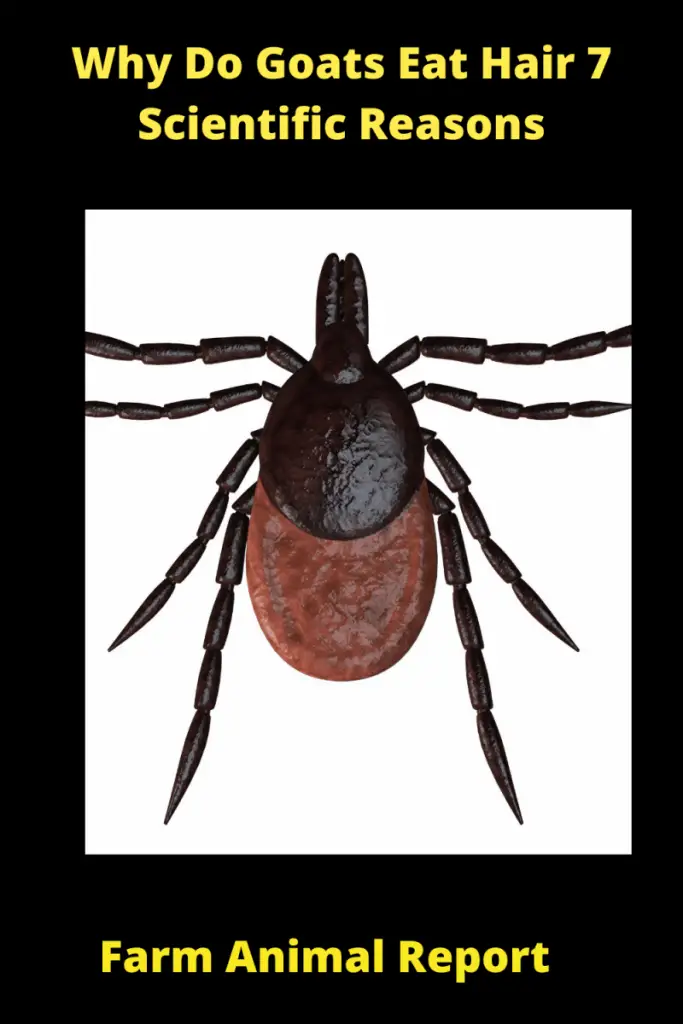
How can We Control the Tick Infestation in Goats?
Insecticides
- Using the insecticide: consult your vet before working with insecticides. Be sure to obtain a product that is registered for use on goats and effectively treat ticks.
- Mix the insecticide in the correct concentration for spray use, as indicated by the product label, and confirmed by your vet. You can use insecticide as a dip, but most owners find that it is easier to mix and apply the insecticide as a spray.
- Spray the insecticide over the entirety of the goat’s back, sides, and flanks.
- Spray the insecticide on the goat’s brisket, then spray each leg.
- Spray the insecticide on the goat’s underbelly, including the scrotum or udder, if present. Spray the insecticide on the tail and anal area. Be sure to cover all sides of the tail base thoroughly. Spray the insecticide on the goat’s face, chin, head, neck, and ears.
- Let your goat dry thoroughly in a warm, dry place before placing him back in his living quarters.
Natural Methods
- Free Range Chickens in Goat Pastures. Chickens find Ticks quite Tasty
- Natural Herbs in Goat feed – Garlic is a natural Bug repellant. Their feed will repel insects from the inside out.
Mites:
There are many species of mites, but most are harmless. The two economically important conditions caused by mites is mange.
Mange:
Several different species cause mange, but the most important is Sarcoptes spp, which causes Sarcoptic Mange. This is a contagious condition more common in goats than sheep, and rarely seen in woolly sheep. The mites burrow into the animal’s skin, causing thickening and wrinkling of the skin with thick crust formation.
Other mites include Psoroptes caprae found in the ears of goats, which can result in deafness if not diagnosed and treated. Chorioptes Sp is found on the legs of goats. It caused extreme itchiness, and affected animals will often stamp their legs continually.
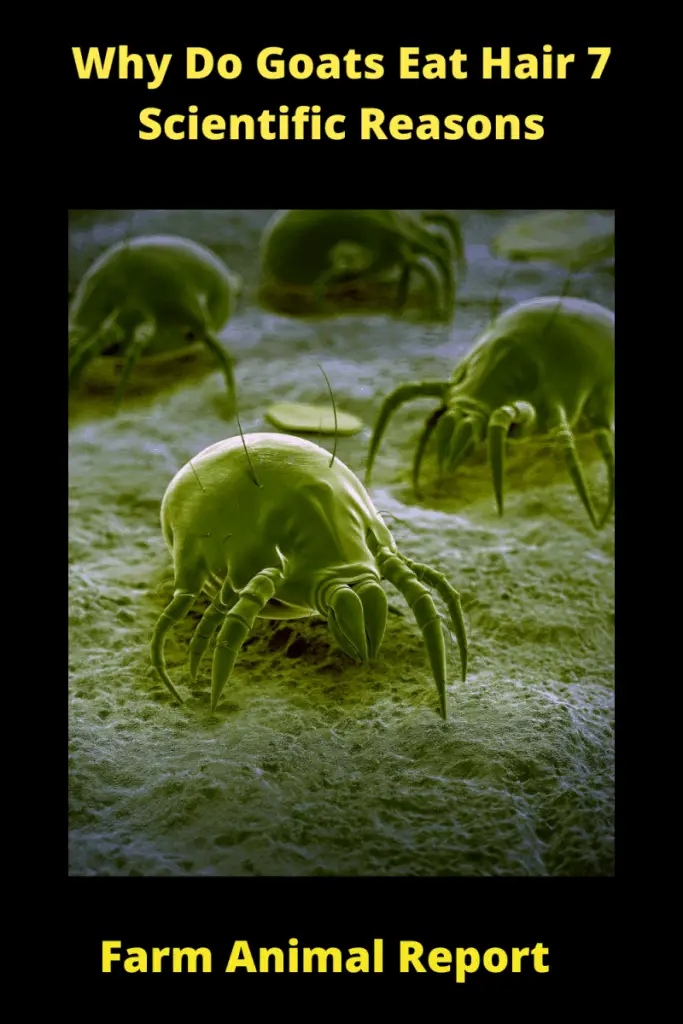
Fleas and lice:
These are found where animals are kept in close confinement, over-crowded, and where the environment is warm and humid. Infestation causes anemia, especially in young animals and damage to the skin leading to losses on hides.
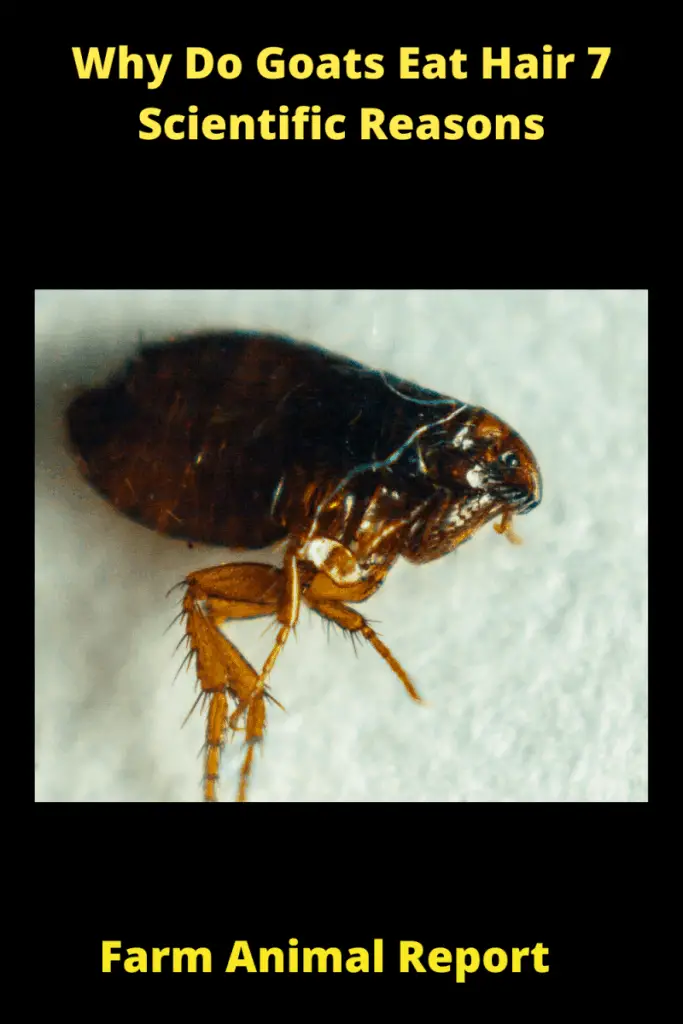
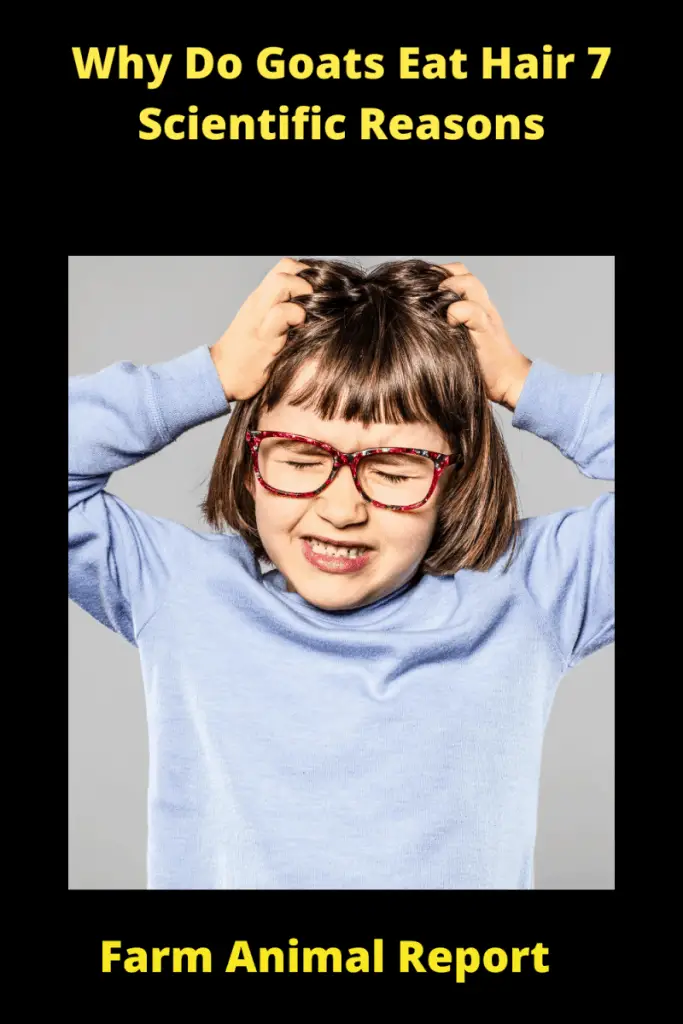
Control:
Control is by dipping, avoiding over-crowding, regular cleaning of houses, and changing of bedding if this is used.
Mineral Deficiency:
The signs of mineral deficiency are faded hair color, loss of fur or patches of missing fur, balding tail tip, crooked legs, poor conformation, rough or flaky skin, rough or scruffy hair, poor weight gain or inability to maintain weight, low milk production, bloody or pink milk, loss of kids, abortion, other birthing problems, parasite problems, inability to fight common infestations and parasites, and generally poor health.
Do keep in mind that most of these symptoms can be caused by other, more direct issues than mineral deficiency. If your goat is not healthy as they should be or are just plain sick, address the immediate causes first, examine your goats’ nutritional needs, and see if a mineral deficiency may be added to their health issues.
The largest nutritional aspect that goats require to be healthy is the mineral content. Goats need a lot more minerals and in a large variety than most other livestock. Grass pasture, hay, and most grain blends do not contain enough minerals specifically tailored to goat health. You will be hard-pressed to maintain a healthy goat herd on grass, hay, and grain alone.
It is strongly urged every goat owner to provide their goat herd access to a loose mineral blend designed specifically for goats. All stock or non-goat minerals will not contain enough of the essential minerals that goats need. Stay away from mineral blocks or fortified salt licks.
These are typically not formulated for goats, and they are too hard for a goat to get enough minerals from. Also, mineral blocks use salt as a building agent and are too salty to encourage enough to be eaten to satisfy mineral needs.
Loose minerals allow your goats to eat as much as they feel they need. Put a pan or feeder tray of loose minerals in every goat pen or pasture. Be sure to refill the pan often to keep the minerals clean and fresh. Goats do not like stale minerals.
When choosing your loose mineral blend, be sure to think about what minerals are abundant in your area and what your area is especially deficient in. Your local extension office or agricultural department should be able to help you determine this.
Also, think about what minerals are present in your goats’ water source. If your water is very high in iron so you don’t overdose your goat. Your veterinarian should also be able to help you decide what minerals your goats need.
Blood tests and other diagnostics help formulate the correct mineral supplementation to make your goats as healthy as possible. There are many great loose goat mineral blends available, and some are better for certain parts of the country than others.
There are the Following Minerals which are Essential for the Goat:
Copper:
Typical signs of deficiency include hair loss on the tip of the tail known as fishtail, crooked legs, stiff joints, diarrhea, anemia, loose of hair color, lameness, infertility or miscarriage, failure to shed their winter coat, high parasite loads, hair loss around eyes, poor immune system, milk reduction, and even heart failure. Severe cases will require a copper bolus.
What are the Causes of Copper Deficiency:
- Alfalfa hay is high in molybdenum. Molybdenum is a copper antagonist, so it reduces the amount of copper absorbed from the diet.
- Water that’s high in calcium, sulfur, or iron, which are also antagonists, binds to copper and keeps it from being used by the body.
- Coal-fired power plants can contaminate land with sulfur, among many other things.
- Lack of copper in the soil
- Lack of good soil biology.
Symptoms of Copper Toxicity:
- Weakness, panting, and dull attitude.
- Pale mucous membranes
- Yellow discoloration of the mucous membranes of the eyes, gums, and genitalia.
- Dark brown or red-colored urine
- Abortion in pregnant does
- Death
Causes of Copper Toxicity:
- Living near mines or buying hay grown near them
- Lack of antagonists
- Over supplementation
- Liver damage, such as eating a toxic plant, can cause a large release of stored copper, causing fatal toxicity.
- Allowing a goat to have access to supplements or feed intended for cattle, swine, poultry, or horses can create copper toxicity in goats.
- Grazing goats on pasture that has been fertilized with cow, pig, or poultry.
Iodine:
Iodine deficiency can cause an array of symptoms: an enlarged thyroid, poor growth, reduced milk production, pregnancy toxemia, reproductive abnormalities, and infertility, to name a few. To treat, you simply paint the tail web with an iodine solution. However, iodine toxicity has a small margin of error, therefore please consult a veterinarian before administering iodine.
Sodium:
A low sodium count can cause many issues, including but not limited to: heart issues, muscle contractions, slow growth, tremors, poor appetite, and a lack of coordination. When introducing salt or any minerals to their diets, make sure an endless supply of water is available. Sodium toxemia occurs when large quantities of salt are introduced, or water availability is low.
Selenium:
Symptoms of Selenium Deficiency:
- White muscle disease: a type of nutritional muscular dystrophy.
- Fertility issues are similar to copper deficiency.
- Retained placenta
- Low milk production
- Poor growth
- Premature kids.
Causes of Selenium Deficiency:
- Feed/mineral choices low in selenium
- Too much selenium antagonist in offerings to goats
- Low selenium in the soil
- Lack of biology in the soil.
Symptoms of Selenium Toxicity:
- Rough coat
- Hair loss
- Lameness
- Sloughing of hooves
- Erosion of joints
- Liver cirrhosis
- Cardiac atrophy
- Lower conception rates
- Anemia
- Congenital disabilities
Zinc:
- Thicken flaky skin
- Weight loss
- Small testicles
- Buck uninterested in mating
- Stiff joints
- Excessive salivation.
Causes of Zinc Deficiency:
- High calcium in the diet
- Lack of zinc in soil
- Lack of good biology in the soil
- Alkaline soil reduce zinc availability
Symptoms of Zinc Toxicity:
- Loss of appetite
- Loss of condition
- Diarrhea
- Profound weakness
- Jaundice
Causes of Zinc Toxicity:
- Over supplementation
- Providing water in galvanized steel trough or bucket.
How can you prevent your goat from eating hair?
- Make sure that your goat barn is located where there is no issue of external parasites. Otherwise, you should do the spray of cypermethrin around your area.
- Provide the best mineral mixture to your goat, which helps your goat prevent licking the hairs.
Goat Breeder Associations
| Goat Association | Location | Link |
|---|---|---|
| American Goat Breeders Association | United States | AGF |
| English Goat Breeders Association | UK | EGBA |
| Canadian Meat Goat Association | Canada | CMG |
| Minature Goat Breeders Association | Australia | MGBA |
| Boer Goats | South Africa | BGSA |
| American Boer Goat Association | United States | ABGA |
| World Goat Breeders Associations | List | WGBA |


